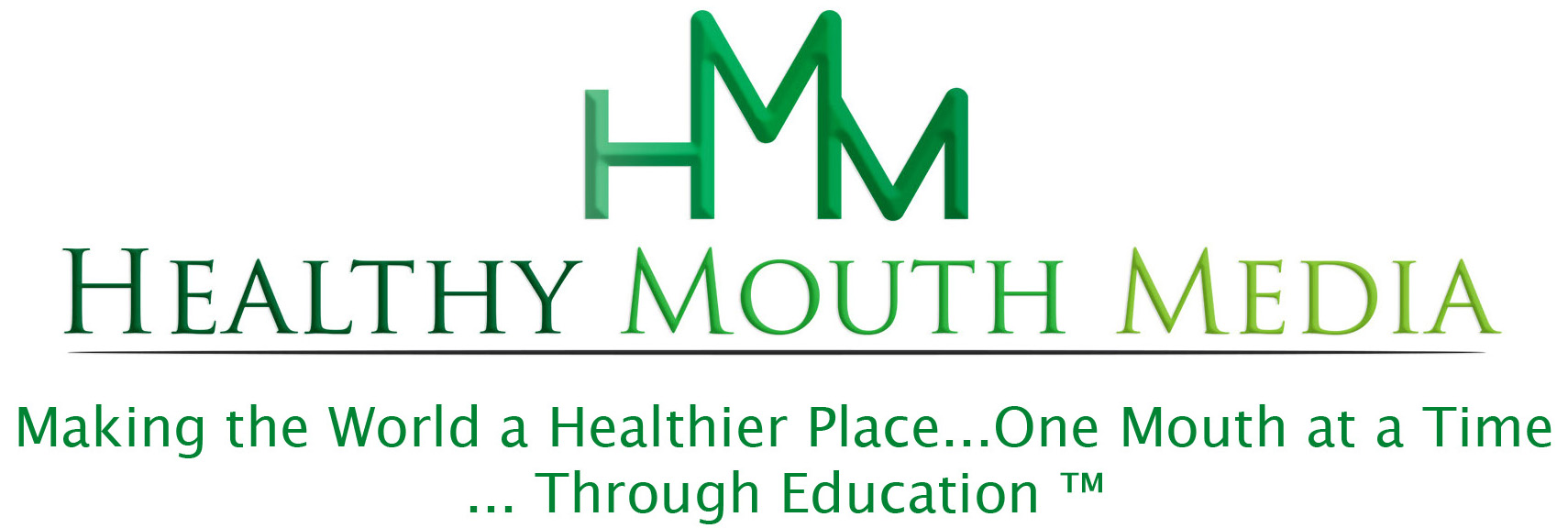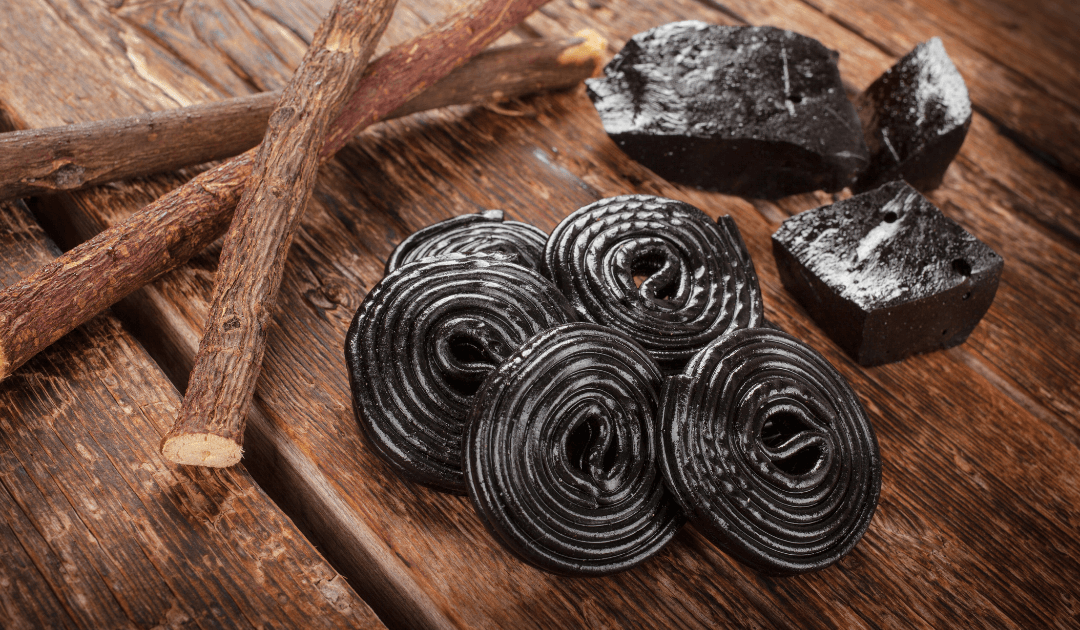Black licorice and High Blood pressure
Natural black licorice (the root of Glycyrrhiza glabra) has been a favorite flavoring (especially for candy) and medicinal herb for thousands of years, but it hides a dark side, the potential for high blood pressure. Yes, black licorice can cause high blood pressure and drug interactions that can be life-threatening for some (both adults and children).
No one tells you about this. Very few doctors seem to know this! There are NO warning labels on packages (or products) containing natural black licorice.
This is a serious health issue – everyone should be aware of the potential serious health consequences of eating natural black licorice in any form and the risk factors associated with it.
First, let me say that there are all sorts of ‘black licorice’ candies on the market (‘red’ licorice is NOT the same as black licorice). Few, if any of these products, actually use natural licorice root extract as an ingredient. Read the label. Look for licorice extract or glycyrrhizic acid among the ingredients so you can avoid them.
When I experienced a 100+ point spike in my blood pressure, I dove into the scientific research – and there is a lot of it – in peer-reviewed journals.
Risk factors to watch for if consuming black licorice root products are:
+ over 40
+ elevated blood pressure
+ a heart condition
+ taking blood pressure medicine
+ obstructive sleep apnea (OSA can raise BP all on its own!)
BUT, people with NONE of these risk factors – like me – can still have a reaction!
Other than being over 40, I have none of these risk factors and my heart health is excellent and my blood pressure is normal – but that didn’t protect me from experiencing the side effects first hand.
 Here’s what happened to me – Scary!
Here’s what happened to me – Scary!
I (Bonnie) found out the risk of eating licorice in a rather dramatic fashion. I had a routine doctor’s appointment and, as usual, the nurse assistant took my blood pressure. She took it again. She took it again, this time with the cuff being inflated to a painful level.
I asked her if there was a problem. She asked me if I felt OK. Yes. I asked her what my reading was, because I have no problem with my BP and am normally in the 120/70 range. She told me it was 245/188 and that she was afraid I would ‘stroke out’ right there!
What the ????
I’ve NEVER had BP that high! Nothing in my life had changed. EXCEPT that Scott had bought me organic black licorice candy from Finland as a gift. I’ll be honest – I LOVE natural black licorice. Yes, I had been eating some (maybe 15 pieces spaced through the day) almost daily for over a week. Hmmm… could that be the source of my crazy high BP reading?
I then remembered an older friend from years ago bemoaning the fact that his doctor had told him to NEVER eat black licorice because he was being treated for high blood pressure. Could the licorice candy have spiked my blood pressure over 100 points?
Turns out the answer is a resounding YES, as I found out when I did more research.
I asked my doctor if he thought the licorice could be the source of my dangerously high BP. He told me he knew nothing about licorice and high blood pressure beyond “I think I may have read something, somewhere.” He wanted me to come back in a week to get my BP checked again. Would not eating licorice drop my BP to normal? If not, he was going to put me in the hospital for a bunch of tests!
Thankfully my BP DID come down the next day. I haven’t had a problem – or eaten licorice – since.
– But I DO miss licorice.
Let me explain why licorice should be seen as medicine –
Natural licorice (the root of Glycyrrhiza glabra) has been around – and used for flavoring as well as part of many medicines – for thousands of years. It was found in the tomb of Egypt’s King Tut who died 3,000 years ago. It is mentioned as being used by the soldiers of Alexander the Great’s army to quench thirst.
Hippocrates, the famous Greek physician, used it to heal wounds and treat sore throat. Licorice is also an important herb in Chinese medicine. It’s in tea, tobacco, laxatives, diet gum, cough treatments and a variety of herbal medicines.
The main active ingredient is glycyrrhizin. [1] [2]
But, there is a problem with licorice root – it’s been known for decades to cause high blood pressure. Sometimes high enough to cause a stroke, heart attack or death. It can also interact with other medications, particularly those that treat high blood pressure. [3]
There are two different forms of high blood pressure (hypertension) – primary and secondary.
Primary is where the patient has no clear reason for the high blood pressure. However, about 5-10% of these patients have secondary hypertension.
This can be the result of a different disease affecting the cardiovascular system, such as renal (kidney) diseases, cardiac arrhythmias, adrenal gland issues (hyperaldosteronism) and obstructive sleep apnea (OSA). [3,4]
Licorice can affect hormonal regulation, including cortisol and can create a similar effect in the body to using a corticosteroid.[1]
Edema (swelling in the body caused by fluid retention, often seen in the feet and legs) with high blood pressure has been called ‘licorice syndrome’. [1]
Licorice-drug interactions are MANY
Licorice decreases the bioavailability (the degree to which a substance put into the body can actually be used by the body) of the immunosuppressive drug cyclosporine. This drug is used to treat organ rejection after transplant [6] as well as autoimmune diseases like rheumatoid arthritis and psoriasis. The licorice component glabridin was also shown to reduce the bioavailability of the cancer chemotherapy drug doxorubicin.[7]
Is there a positive side to licorice root?
On the positive side, licorice has been used for millennia because it was thought to help a variety of conditions – from slow heart rate to constipation. And until the concept of blood pressure – discovered in 1733 by Sir Stephen Hales – doctors had no way to know about the risks of licorice.[8]
Modern research is finding that glycyrrhizin, one of the over 300 active ingredients in licorice root, seems to be effective for treating cancer, including breast and prostate cancers. Several research studies are underway to test new drugs that incorporate glycyrrhizin.[5]
Licorice and its derivatives are affirmed as ‘Generally Recognized as Safe’ (GRAS) for use in foods by the United States Food and Drug Administration [1]. Federal requirements for achieving GRAS status are numerous, diverse, convoluted – and confusing – and beyond the scope of this article. If you’re curious about licorice’s GRAS status, see below under “For the health care professionals reading this (or if you just want to geek out)”.
Licorice-induced effects can happen to patients of all ages and all over the world.[2]
Are you a health care professional? How much do YOU know about licorice?
A high level of suspicion (and serious discussion about a patient’s licorice use) remains warranted in patients with unexplained hypokalemia (low potassium) and/or hypertension (high blood pressure)[2]
Given the multiple side effects already known to researchers, licorice consumption should be treated with caution by both consumers and health care professionals.
Bottom line –
Treat licorice as medicine – not candy. If you aren’t sure about possible interactions, ask your doctor. Better yet: provide your doctor with information he or she may not be familiar with – share this article – and its references so they can do their own research.
For the health care professionals reading this (or if you just want to geek out on the details) –
Here is the chemical explanation of what happens when licorice root products are consumed. These are excerpts from a variety of papers (see Resources).
Note: “Liquorice” is the British alternative spelling for licorice.
“Licorice consists of up to 300 active compounds including: phenolic acids, flavonoids, flavins, chalcondes, isoflavans (including glabridin, the main compound found in the hydrophobic fraction of licorice extract) and isoflavonoids”.[1,5]
“The most important side effects of licorice and glycyrrhizin are hypertension and hypokalemic-induced secondary disorders. Licorice side effects are increased by hypokalemia, prolonged gastrointestinal transient time, decreased type 2 11-beta-hydroxysteroid dehydrogenase activities, hypertension, anorexia nervosa, old age, and female sex”.[2]
“Many case reports were published concerning the clinically significant increase in blood pressure caused by the consumption of liquorice root or food products containing liquorice, such as candies, tea, Pontefract cookies, and chewing gum. Liquorice contains a precursor of glycyrrhetic acid. Glycyrrhetic acid reduces the activity of the 11β-hydroxysteroid dehydrogenase type 2 (11ß-HSD2) isoenzyme, which leads to activation of the mineralocorticoid receptor by cortisol in the distal convoluted tubule resulting in hypertension, hypokalemia, and metabolic alkalosis”.[10]
And still more research…
“Consumption of large amounts of liquorice can cause hypertension and hypokalaemia. Liquorice contains glycyrrhetinic acid, which inhibits the enzyme 11 beta-hydroxysteroid dehydrogenase type 2, and ultimately leads to an apparent mineralocorticoid excess syndrome. This case report describes a 50 year-old woman presenting with hypertension and hypokalaemia-induced limb paresis due to chronic liquorice ingestion. The patient was treated with potassium supplementation and spironolactone. Her blood pressure and electrolyte status normalised within a month after cessation of liquorice intake.”[11]
“The main active constituent of licorice is the prodrug glycyrrhizin, which is successively converted to 3β-monoglucuronyl-18β-glycyrrhetinic acid (3MGA) and 18β-glycyrrhetinic acid (GA) in the intestines. Despite many reported health benefits, 3MGA and GA inhibit the 11-β-hydrogenase [sic] type II enzyme (11β-HSD2) oxidizing cortisol to cortisone. Through activation of mineralocorticoid receptors, high cortisol levels induce a mild form of apparent mineralocorticoid excess in the kidney and increase systemic vascular resistance. Continuous inhibition of 11β-HSD2 related to excess licorice consumption will create a state of hypernatremia, hypokalemia and increased fluid volume, which can cause serious life-threatening complications especially in patients already suffering from cardiovascular diseases.”[1]
“Licorice can interfere with cardiac medications, e.g., with drugs used in the treatment of hypertension such as angiotensin converting enzyme (ACE)-inhibitors [1 (see also: reference #121 cited in this review paper)]
The FDA classification of “Generally Regarded As Safe” may not offer a practical ‘apples-to-apples’ comparison. While it is worth noting that the maximum amounts of glycyrrhizin allowed in food additives under the GRAS classification are extremely small (ranging from 0.05% for baked foods to 0.5% for vitamin supplements) in comparison with those allowed in soft candy (3.5%) hard candy (16%). These numbers offer little basis on which to draw conclusions about how much licorice candy is safe to eat. (see links below)[12,13]
Resources:
1. https://www.ncbi.nlm.nih.gov/pmc/articles/PMC6836258/
2. https://www.njmonline.nl/getpdf.php?id=301
3. https://www.ncbi.nlm.nih.gov/pmc/articles/PMC3498851/
4. https://pubmed.ncbi.nlm.nih.gov/29094913/
5. https://pubmed.ncbi.nlm.nih.gov/26366756/
6. https://pubmed.ncbi.nlm.nih.gov/22980806/
7. https://www.frontiersin.org/articles/10.3389/fphar.2019.00107/full
8. https://www.ncbi.nlm.nih.gov/pmc/articles/PMC6059006/
9. https://onlinelibrary.wiley.com/doi/abs/10.1002/ptr.2362
10. https://pubmed.ncbi.nlm.nih.gov/28833680/
11. https://pubmed.ncbi.nlm.nih.gov/31915940/
12. https://www.accessdata.fda.gov/scripts/cdrh/cfdocs/cfcfr/cfrsearch.cfm?fr=184.1408
13. https://www.ecfr.gov/current/title-21/chapter-I/subchapter-B/part-184/subpart-B/section-184.1408

